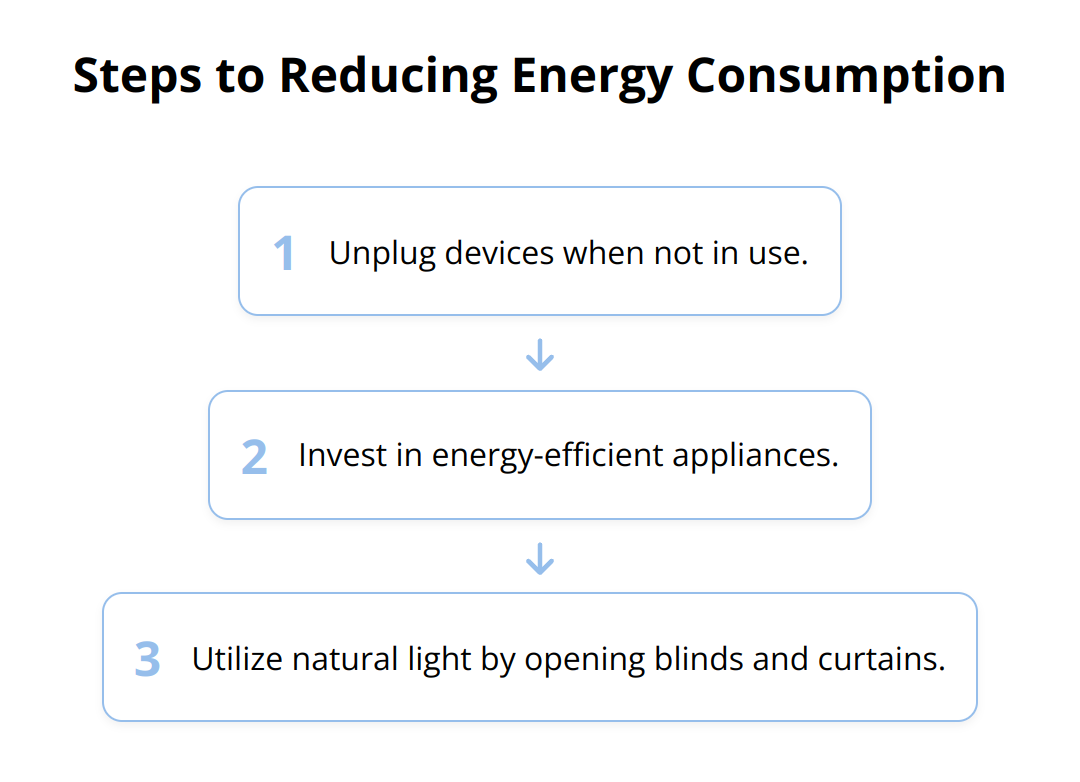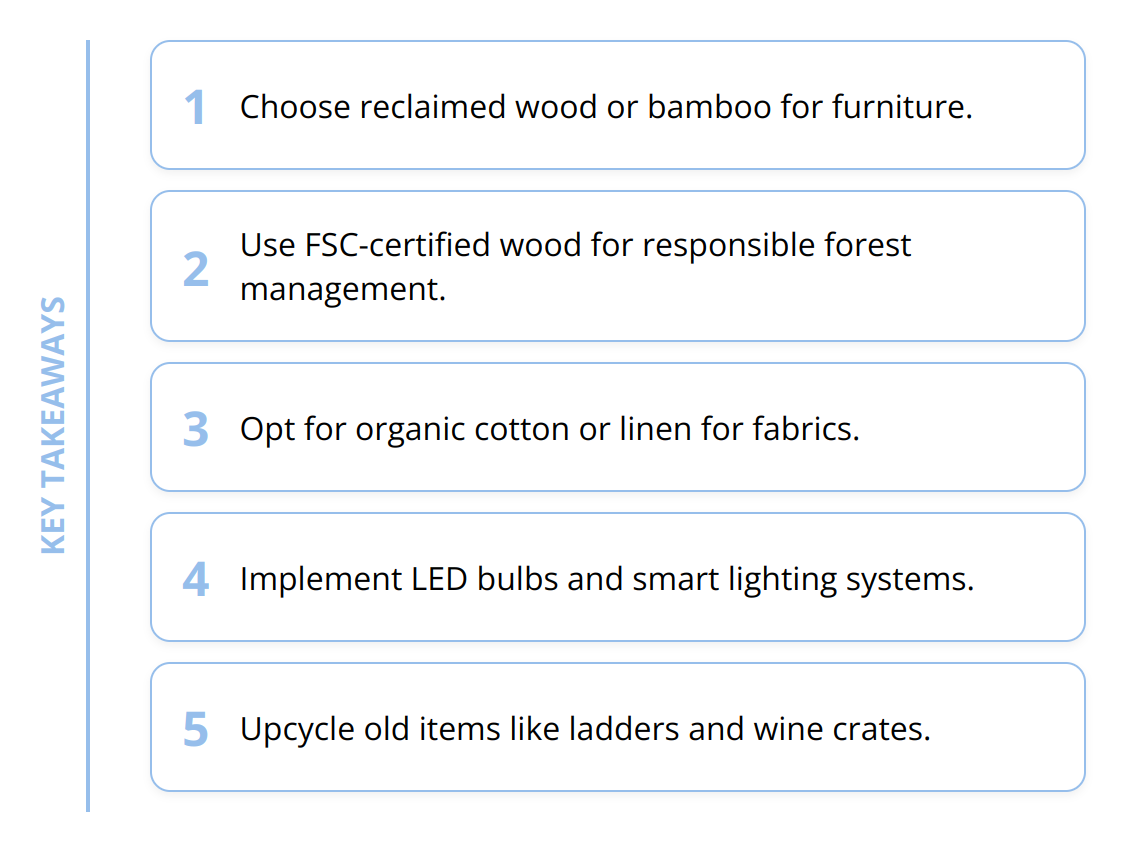Creating a sustainable living room goes beyond just choosing the right furniture. It involves selecting eco-friendly materials, decor accessories, and mindful maintenance practices.
Here at The A Team Cleaning Services, we are committed to helping you make environmentally conscious choices for your home.
What Materials Should You Choose?
Selecting eco-friendly materials for your living room furniture is a game-changer for sustainable decor. Reclaimed wood and bamboo are excellent choices. Reclaimed wood not only reduces waste but gives your living room a rustic, unique charm. Bamboo grows astonishingly fast and requires fewer pesticides, making it a superior sustainable option.

Look for FSC-certified wood. The Forest Stewardship Council (FSC) certification guarantees that the wood comes from responsibly managed forests. This ensures sustainable harvesting and helps in maintaining forest biodiversity.
Recycled metal and plastic are also great choices for a sustainable living room. These materials significantly reduce the need for virgin resources. Opt for furniture that prominently features recycled components. This effort cuts down on landfill waste and lowers your carbon footprint.
Some practical tips to keep in mind:
- Reclaimed Wood: Ideal for a rustic touch while reducing waste.
- Bamboo: Fast-growing, fewer pesticides.
- FSC-Certified Wood: Guarantees responsible forest management.
- Recycled Metal/Plastic: Cuts down landfill waste and virgin material usage.
For additional tips on eco-friendly cleaning solutions, consider adopting cleaning practices that align with your sustainable furniture choices. By integrating these materials into your living room, you contribute to a healthier planet and create a stylish, ethical space.

What Decor Accessories Are Sustainable?
Choosing the right decor accessories makes a big impact on achieving a sustainable living room. Opt for organic cotton and linen fabrics. These materials are biodegradable, reduce pesticide use, and have a smaller carbon footprint compared to conventional fabrics. Organic textiles also contribute to a healthier indoor environment as they are free from harmful chemicals.
Natural fiber rugs and carpets like those made from wool, jute, or seagrass offer durability and are renewable. They add warmth and texture to your living room while being compostable at the end of their lifecycle. According to a study by the International Journal of Life Cycle Assessment, wool carpets have a lifespan of about ten years, significantly reducing replacement frequency.

Energy-efficient lighting solutions are indispensable for a sustainable living room. LED bulbs use up to 75% less energy and last 25 times longer than traditional incandescent bulbs, as per the U.S. Department of Energy. They not only cut down on energy consumption but also reduce the frequency of replacements, translating to long-term savings. Smart lighting systems offer additional functionality, allowing you to control brightness and color, which can help save even more energy.
Some practical tips to enhance your sustainable living room decor:
- Opt for organic cotton or linen for fabrics.
- Choose natural fiber rugs like wool, jute, or seagrass.
- Implement LED bulbs and smart lighting systems to conserve energy.
By integrating these accessories, you’re taking concrete steps towards creating a more eco-friendly living space. For more tips on maintaining an eco-friendly home, check out our guide on green living room care.
How to Maintain a Sustainable Living Room?
One of the most effective ways to maintain a sustainable living room is by upcycling and repurposing items. This creative practice helps reduce waste while adding unique elements to your space. For instance, consider turning old ladders into bookshelves or using wine crates as storage units. These repurposed items not only make a statement but also cut down the amount of waste sent to landfills.

In addition, reducing energy consumption significantly contributes to the sustainability of your living room. Unplugging devices when they are not in use can save up to 10% on your energy bill, according to the U.S. Department of Energy. Investing in energy-efficient appliances, such as Energy Star-rated products, can save up to 30% more energy than non-rated ones. Utilizing natural light by keeping blinds and curtains open during the day can reduce the need for artificial lighting.
Selecting low-VOC paints and finishes ensures a healthier living space. Traditional paints release volatile organic compounds (VOCs) into the air, leading to indoor air pollution. Low-VOC paints contain fewer harmful chemicals, reducing the risk of respiratory issues and contributing to a healthier home environment. Brands like Benjamin Moore and Sherwin-Williams offer a range of low-VOC options. According to the Environmental Protection Agency, using low-VOC paints can improve indoor air quality by up to 50%.

Some practical tips to maintain your sustainable living room:
- Upcycling & Repurposing: Use old ladders as bookshelves, wine crates as storage.
- Energy Consumption: Unplug devices; use natural light.
- Low-VOC Paints: Opt for brands like Benjamin Moore and Sherwin-Williams.
By focusing on these actionable steps, you can create and maintain a living room that is both stylish and environmentally friendly. For more detailed guidance on sustainable cleaning, refer to our guide on sustainable cleaning routines.
Final Thoughts
Choosing sustainable materials and decor for your living room not only reduces waste and environmental impact but also creates a stylish and unique space. Opting for eco-friendly materials like reclaimed wood, bamboo, organic textiles, and recycled metals significantly boosts your green credentials. Accessories such as organic cotton fabrics and natural fiber rugs enhance the sustainability and aesthetics of the room.

Maintaining a sustainable living room involves upcycling, repurposing, and reducing energy consumption. Practices like using smart lighting systems, selecting low-VOC paints, and unplugging unused devices contribute to a healthier and more eco-friendly home environment.
We at The A Team Cleaning Services encourage adopting sustainable practices in home decor. For a seamless eco-friendly living experience, combining sustainable decor choices with our professional house cleaning service ensures a home that is spotless and environmentally conscious. Tailored cleaning plans, experienced cleaners, and commitment to quality provide you with a pristine living space that complements your sustainable lifestyle.
By making these informed choices, you contribute to a greener planet and a healthier living space.
